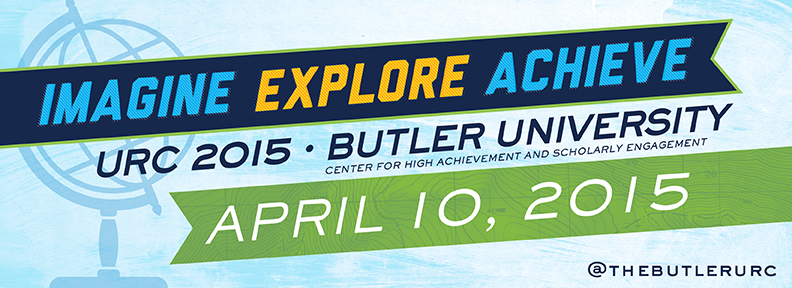
Pharmacy, Health Sciences & Exercise Science
Event Title
Vaccine Education and Compliance Statistics in the Greater Indianapolis Area
Document Type
Oral Presentation
Location
Indianapolis, IN
Subject Area
Pharmacy, Health Sciences & Exercise Science
Start Date
10-4-2015 9:15 AM
End Date
10-4-2015 10:00 AM
Sponsor
Chad Knoderer, Veronica Vernon (Butler University)
Description
Background: Recently, rates of certain vaccine-preventable diseases have increased and outbreaks have occurred. For example, in 2014, the incidence of measles in the United States reached a record high since 2000, with 644 total cases reported to the CDC's National Center for Immunization and Respiratory Diseases.1 Increases such as this may likely be due to widespread public fears that vaccines can cause serious adverse events. Therefore, due to their accessibility, pharmacists should play a crucial role in lessening these public fears through proper education.
Study objective: The primary objective of this study was to dispel rumors of vaccination and educate the Indianapolis public about the benefits of receiving vaccines. The secondary objective was to assess knowledge of and compliance to certain vaccines among different subpopulations to determine susceptible groups. Barriers to receiving vaccines were examined, and the most appropriate means of overcoming these variables were theorized.
Statistical analysis: An online blinded interactive survey was used to meet the study objectives. Vaccination rates, knowledge of personal vaccine history, and responses as to why patients were not up-to-date with their vaccines were collected. Using chi-square analyses, these descriptive statistics were then analyzed to determine trends among these groups.
Results: Fifty responses were collected from October 20, 2014 to January 12, 2015. The population contained thirty-four females and sixteen males, and age groups ranged from 18-29 years to 60-64 years. After taking an educational survey, thirty-six subjects (72%) claimed that they were up-to-date with their recommended vaccines, one patient (2%) was not sure if he was going to seek vaccination, nine subjects (18%) were not interested in seeking vaccination, and three subjects (8%) stated that they were interested in finding out if they needed to receive vaccines. Of these three subjects, all claimed that the educational survey aided in their decision to seek vaccination.
Conclusion: Despite a small number of respondents, this survey shows trends that may be consistent with the general population. All respondents who were unsure or knowingly not up-to-date with their recommended vaccines and also open to receiving vaccination stated that the educational survey inspired them to determine if further vaccination is needed. On the other hand, all respondents who were knowingly not up-to-date and also not open to receiving vaccination were avidly anti-vaccine. This study shows that a pharmacist is able to influence a substantial portion of the population who are open to receiving vaccines. However, for those who have strong predisposed biases against vaccination, a pharmacist's influence may likely hold less merit.
Vaccine Education and Compliance Statistics in the Greater Indianapolis Area
Indianapolis, IN
Background: Recently, rates of certain vaccine-preventable diseases have increased and outbreaks have occurred. For example, in 2014, the incidence of measles in the United States reached a record high since 2000, with 644 total cases reported to the CDC's National Center for Immunization and Respiratory Diseases.1 Increases such as this may likely be due to widespread public fears that vaccines can cause serious adverse events. Therefore, due to their accessibility, pharmacists should play a crucial role in lessening these public fears through proper education.
Study objective: The primary objective of this study was to dispel rumors of vaccination and educate the Indianapolis public about the benefits of receiving vaccines. The secondary objective was to assess knowledge of and compliance to certain vaccines among different subpopulations to determine susceptible groups. Barriers to receiving vaccines were examined, and the most appropriate means of overcoming these variables were theorized.
Statistical analysis: An online blinded interactive survey was used to meet the study objectives. Vaccination rates, knowledge of personal vaccine history, and responses as to why patients were not up-to-date with their vaccines were collected. Using chi-square analyses, these descriptive statistics were then analyzed to determine trends among these groups.
Results: Fifty responses were collected from October 20, 2014 to January 12, 2015. The population contained thirty-four females and sixteen males, and age groups ranged from 18-29 years to 60-64 years. After taking an educational survey, thirty-six subjects (72%) claimed that they were up-to-date with their recommended vaccines, one patient (2%) was not sure if he was going to seek vaccination, nine subjects (18%) were not interested in seeking vaccination, and three subjects (8%) stated that they were interested in finding out if they needed to receive vaccines. Of these three subjects, all claimed that the educational survey aided in their decision to seek vaccination.
Conclusion: Despite a small number of respondents, this survey shows trends that may be consistent with the general population. All respondents who were unsure or knowingly not up-to-date with their recommended vaccines and also open to receiving vaccination stated that the educational survey inspired them to determine if further vaccination is needed. On the other hand, all respondents who were knowingly not up-to-date and also not open to receiving vaccination were avidly anti-vaccine. This study shows that a pharmacist is able to influence a substantial portion of the population who are open to receiving vaccines. However, for those who have strong predisposed biases against vaccination, a pharmacist's influence may likely hold less merit.
